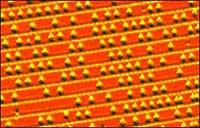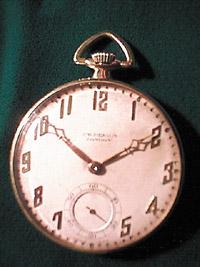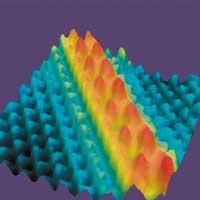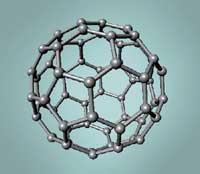Atomic memory
2002/10/02 Carton Virto, Eider - Elhuyar Zientzia
Keeping bits of information in atoms, a CD could store 650 megabytes no, 650 million megabytes. Memories based on atoms are one of the great challenges of nanotechnology today, and Richard P is slowly approaching. Proposed by physicist Feynman in 1959. Feynman then delivered at the California Institute of Technology the lecture entitled ‘Down there is a lot of space’ (There is plenty of room at the botton). In his speech, he spoke of the possibility of building smaller and smaller machines until having tools for the direct handling of atoms and molecules.

Researchers at the University of Wisconsin have used one of these tools, the tunnel effect sweeping microscope, to extract one by one atoms from a layer of silicon atoms. Each of these gaps corresponds to a bit of information, although in practice (the gaps must be stable, so it cannot be placed next to each other) each bit formed by a system of 20 atoms. Conventional memory systems need millions of atoms.
The practical versions of this laboratory memory, however, will still have to overcome many obstacles. The system should be managed to run at room temperature and the information should be stored and read quickly. They say they precede them for decades.
Additional information:
Nanotechnology Professor Franz Himpsel, the smallest

Gai honi buruzko eduki gehiago
Elhuyarrek garatutako teknologia






